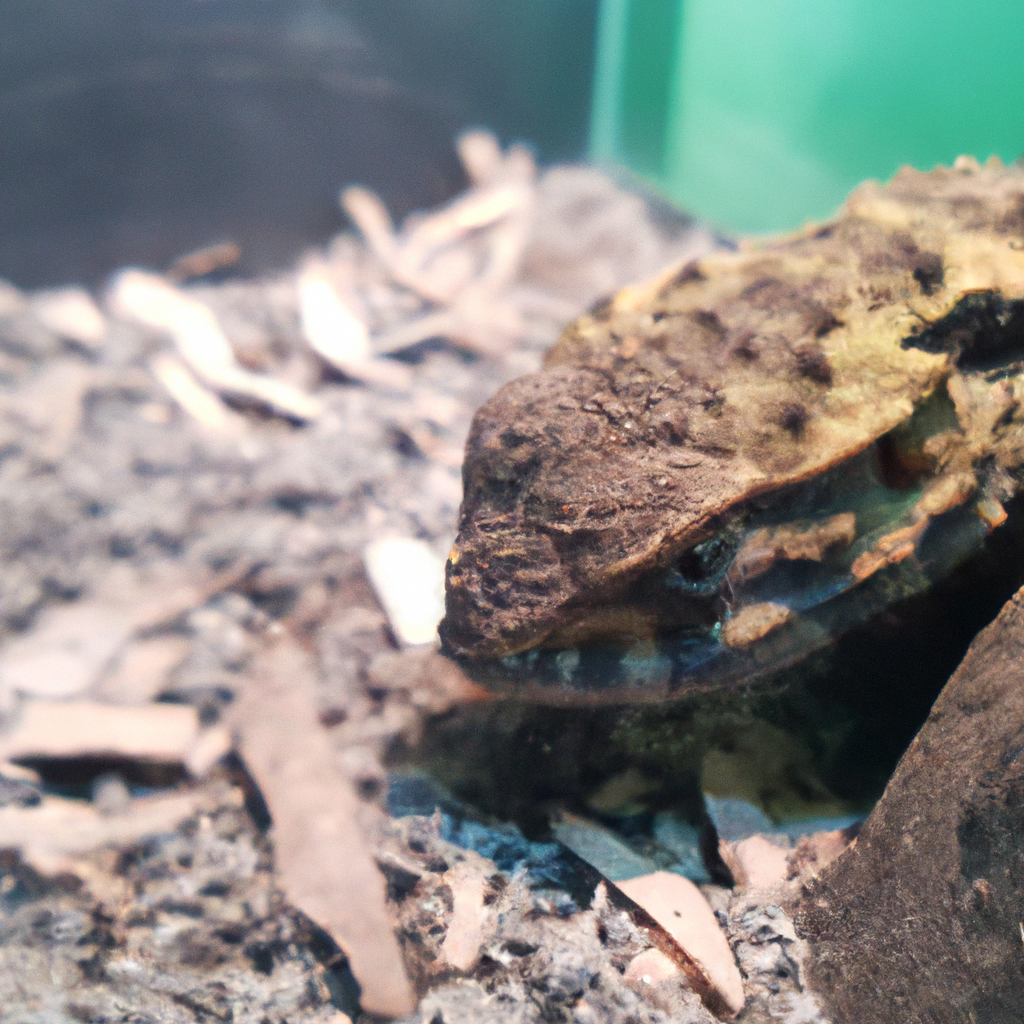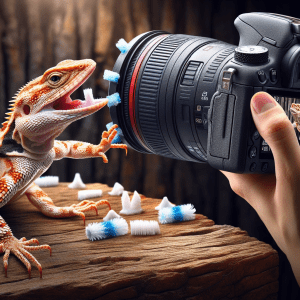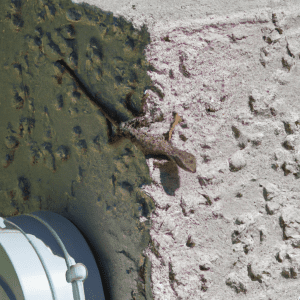Importance of Lizard Habitat Maintenance
You know how much I love my pet lizard, right? Well, I recently came across this interesting dilemma when it comes to maintaining their habitat. It’s all about finding the right balance between creating a natural environment for your lizard and ensuring it’s easy to clean and maintain. It’s a bit of a challenge, but definitely worth it for our scaly friends.
The thing is, lizards need a habitat that mimics their natural environment to keep them healthy and happy. This means providing the right temperature, humidity levels, lighting, and hiding spots. However, creating such a habitat can sometimes make it a bit tricky to clean and sanitize regularly. It’s like walking a tightrope, trying to strike that perfect balance.
I’ve been researching different strategies to tackle this challenge, and I’ve found some interesting solutions. For example, using natural substrates like coconut coir or cypress mulch not only create a more naturalistic environment but also make spot-cleaning easier. Plus, incorporating live plants can help maintain humidity levels while providing a more visually appealing habitat for your lizard.
Another aspect of the dilemma is ensuring that the habitat doesn’t become a breeding ground for bacteria or parasites. Regularly cleaning and sanitizing your lizard’s habitat is crucial, but you also don’t want to disturb their environment too much. It’s a delicate dance, but with the right approach, we can keep our lizard friends healthy and happy.
Have you faced a similar challenge with your pet lizard’s habitat maintenance? How do you strike a balance between creating a natural environment and ensuring it’s easy to maintain? Let’s navigate this dilemma together and share our tips and tricks for a harmonious lizard habitat.
Choosing the Right Habitat for Your Lizard
Did you know that choosing the right habitat for your lizard is crucial for its overall health and well-being? Lizards have specific habitat requirements based on their species, size, and natural habitat. For instance, arboreal lizards like chameleons need tall enclosures with plenty of branches to climb, while ground-dwelling lizards such as bearded dragons require more space to roam and bask under a heat lamp. Understanding your lizard’s natural habitat preferences can help you create a suitable environment that mimics its natural surroundings, promoting a happier and healthier pet. So, let’s dive into the exciting world of lizard habitats and explore how you can set up the perfect home for your scaly friend.
Essential Supplies for Lizard Habitat Maintenance
Hey, did you know that when it comes to maintaining a lizard habitat, choosing the right supplies can make a world of difference? It’s like creating a cozy home for your scaly friend to live their best life. Let me tell you a cool fact about this – did you know that providing the correct supplies not only ensures your lizard’s comfort but also promotes their overall well-being? It’s fascinating how something as simple as the right habitat setup can have such a significant impact on their health.
Imagine this – by selecting the appropriate supplies like substrate, hiding spots, and climbing structures, you’re essentially creating a mini jungle or desert oasis for your lizard. It’s like giving them their own little piece of paradise right in your home. Plus, having a well-equipped habitat can encourage natural behaviors in your pet lizard, keeping them active and entertained.
Now, here’s a fun tidbit for you – lizards are known to be quite particular about their habitat preferences. For instance, some species may require specific types of substrate for burrowing, while others might need elevated basking spots for thermoregulation. By understanding your lizard’s unique needs and providing the right supplies, you’re essentially catering to their individual preferences, just like creating a customized living space for a human!
So, the next time you’re setting up your lizard’s habitat, think about how each supply contributes to their comfort and happiness. It’s like decorating a room but with a reptilian twist! Remember, a well-maintained habitat not only benefits your lizard but also enhances your bond with your scaly companion. It’s all about creating a harmonious environment where both you and your lizard can thrive together. Cool, right?
Setting Up Proper Lighting and Heating
You know, when it comes to setting up the right lighting and heating for your lizard’s habitat, there’s actually a pretty fascinating fact I recently learned. Did you know that different species of lizards have specific lighting and heating requirements based on their natural habitats in the wild? It’s like tailoring their environment to mimic their native conditions for them to thrive!
So, picture this – your lizard might need a basking spot with a specific temperature range to mimic the warmth they would soak up in their natural habitat. And the lighting? Well, some lizards require UVB lighting to help them produce Vitamin D, just like they would from the sun in the wild.
Getting the lighting and heating just right is crucial for your lizard’s health and well-being. You want them to feel comfortable and have the energy they need to stay active and healthy. Plus, providing the right lighting and heating can also help regulate their metabolism and digestion, which is pretty cool if you ask me!
I remember when I first set up the lighting and heating for my leopard gecko, I was amazed at how much of a difference it made in his behavior. He seemed more active and alert, basking under his heat lamp like a little sun worshipper. It was such a rewarding feeling to see him thriving in his habitat thanks to getting those elements just right.
So, when you’re setting up your lizard’s habitat, remember to do a bit of research on their specific lighting and heating needs based on their species. It’s like creating a mini natural paradise for your scaly friend to enjoy!
Maintaining Optimal Humidity Levels
Hey, did you know that maintaining the right humidity levels in your lizard’s habitat is crucial for their health and well-being? It’s like creating a mini tropical paradise for your scaly friend!
When it comes to keeping your lizard happy, ensuring the humidity levels are just right is key. Different species of lizards have specific humidity requirements, so it’s essential to research and understand what your particular lizard needs. For example, tropical lizards like chameleons will require higher humidity levels compared to desert-dwelling species such as bearded dragons.
One practical tip to maintain optimal humidity is to invest in a good quality hygrometer to monitor the humidity levels in the enclosure accurately. This handy device will help you keep track of the humidity and make adjustments as needed to ensure a comfortable environment for your lizard.
Another tip is to provide proper ventilation in the habitat to prevent the buildup of excess moisture, which can lead to mold and bacterial growth. You can achieve this by incorporating vents or mesh openings in the enclosure to allow for air circulation.
Adding live plants to the habitat can also help regulate humidity levels naturally. Plants not only provide a more natural and aesthetically pleasing environment for your lizard but also help maintain moisture levels through transpiration.
Remember, maintaining the right humidity levels is crucial for your lizard’s respiratory health, shedding process, and overall well-being. By taking these practical tips into consideration, you can create a happy and healthy habitat for your scaly companion to thrive in.
Cleaning and Sanitizing Your Lizard’s Habitat
You know, when it comes to maintaining your lizard’s habitat, cleaning and sanitizing play a crucial role in ensuring your scaly friend stays healthy and happy. It’s not the most glamorous task, but it’s super important. One practical tip I can share with you is to establish a regular cleaning routine for your lizard’s habitat.
Consistent cleaning helps to prevent the buildup of harmful bacteria and parasites that could potentially harm your lizard. Start by removing any uneaten food, feces, or shed skin from the habitat daily. This not only keeps the enclosure clean but also helps you monitor your lizard’s health by observing their waste.
Next, on a weekly basis, you’ll want to do a more thorough cleaning. Remove all substrate and decorations from the enclosure and wash them with a reptile-safe disinfectant. Make sure to rinse everything thoroughly to remove any leftover residue from the cleaning solution.
While cleaning, take the time to inspect the habitat for any signs of mold, mildew, or pests. Address any issues promptly to maintain a safe and healthy environment for your lizard.
Remember, when choosing cleaning products, opt for ones specifically designed for reptile habitats to avoid exposing your lizard to harmful chemicals. And always ensure that the habitat is completely dry before reintroducing your lizard to their living space to prevent any respiratory issues.
By staying on top of cleaning and sanitizing your lizard’s habitat, you’re not only creating a clean and comfortable home for your pet but also reducing the risk of diseases and infections. It’s a simple yet effective way to show your lizard some love and care, ensuring they thrive in their environment.
Providing Enrichment and Hideouts for Your Lizard
Did you know that providing enrichment and hideouts for your pet lizard can mimic their natural habitat and reduce stress levels? Just like how we love a cozy nook or a favorite spot to relax, lizards also thrive when they have designated areas to hide and explore in their habitat. It’s like creating a mini jungle gym for your scaly friend!
When setting up your lizard’s habitat, think about adding branches, rocks, or artificial plants for them to climb on and hide behind. This not only adds visual interest to their environment but also encourages natural behaviors and provides mental stimulation. Imagine your lizard feeling like a jungle explorer as they navigate through the different levels and textures in their habitat.
By creating a variety of hideouts and enrichment opportunities, you can observe your lizard’s natural behaviors more closely. Some lizards may prefer high perches to bask in the warmth, while others might enjoy burrowing or hiding in cozy spots. Pay attention to your pet’s preferences and adjust their habitat accordingly to ensure they feel safe and secure.
Remember, a well-enriched habitat not only benefits your lizard’s physical health but also contributes to their mental well-being. Just like how we feel happier and more content in a space that reflects our personality, lizards thrive in environments that cater to their natural instincts and preferences.
So, the next time you’re setting up your lizard’s habitat, get creative with the hideouts and enrichment elements. Watch your pet explore, climb, and relax in their personalized jungle gym, and witness firsthand the joy and contentment it brings to their scaly little heart. After all, a happy lizard is a healthy lizard!
Monitoring Your Lizard’s Health Through Habitat Maintenance
Monitoring your lizard’s health through habitat maintenance is like being a detective in a reptilian mystery novel. You have to pay close attention to clues that your lizard’s habitat is providing about its well-being. Are there any sudden changes in behavior? Any signs of stress or illness? By observing your lizard’s interactions with its habitat, you can gather valuable insights into its overall health.
One practical tip to monitor your lizard’s health is to regularly check the temperature and humidity levels in the habitat. Lizards are ectothermic creatures, meaning they rely on external sources of heat to regulate their body temperature. Ensuring that the temperature gradient in the habitat is appropriate for your lizard’s species is essential for its health and digestion.
Another important aspect of monitoring your lizard’s health is observing its eating habits. Is your lizard consuming its food regularly? Are there any changes in appetite or weight? By keeping track of your lizard’s eating patterns, you can detect any potential health issues early on.
Remember, prevention is key when it comes to your lizard’s health. Regularly inspecting your lizard’s habitat for any signs of wear and tear, mold, or parasites can help you address potential problems before they escalate.
By actively monitoring your lizard’s health through habitat maintenance, you are not only ensuring its physical well-being but also fostering a strong bond with your scaly companion. So, grab your detective hat and magnifying glass, and embark on the thrilling adventure of keeping your lizard healthy and happy!
Common Mistakes to Avoid in Lizard Habitat Maintenance
Alright, let me tell you about a super important aspect of lizard habitat maintenance that often gets overlooked – proper ventilation. You see, ensuring good air circulation in your lizard’s habitat is crucial for their health and well-being. Without adequate ventilation, the air can become stale and humid, leading to respiratory issues and the growth of harmful bacteria.
To tackle this, one practical tip is to include ventilation holes or vents in your lizard’s enclosure. These openings allow fresh air to flow in and help remove excess humidity and odors. You can strategically place these vents on the sides or top of the habitat to create a cross-ventilation effect, promoting air circulation throughout the space.
Another handy trick is to regularly clean and replace air filters, if your lizard’s habitat uses any. Dust and debris can clog up the filters over time, hindering proper airflow. By keeping these filters clean, you ensure that your lizard is breathing in clean, fresh air at all times.
I remember when I neglected the ventilation in my lizard’s tank, and he started showing signs of respiratory distress. It was a wake-up call for me to pay more attention to this often underrated aspect of habitat maintenance. Since then, I’ve made it a habit to check the ventilation in his enclosure regularly to keep him healthy and happy.
So, remember, when it comes to maintaining your lizard’s habitat, don’t underestimate the power of good ventilation. Your scaly friend will thank you for it with their vibrant colors and energetic behavior.
Tips for a Healthy and Happy Lizard Environment
Hey, so I wanted to share this practical tip with you about maintaining your lizard’s habitat. It’s all about creating a comfortable and healthy environment for your scaly friend.
One key aspect of lizard habitat maintenance is ensuring proper temperature and humidity levels. Lizards are cold-blooded creatures, so they rely on their environment to regulate their body temperature. Make sure to provide a heat source, such as a heat lamp or heat mat, to create a warm basking spot for your lizard. This will help mimic their natural habitat and keep them healthy and active.
Another important tip is to monitor the humidity levels in the habitat. Different species of lizards have specific humidity requirements, so it’s essential to research and understand the needs of your particular lizard. You can use a hygrometer to measure the humidity levels and adjust as needed by misting the habitat or using a humidifier.
Regular cleaning and disinfecting of the habitat are also crucial for your lizard’s health. Remove any uneaten food, shed skin, and waste to prevent bacteria buildup. Use a reptile-safe disinfectant to clean the habitat periodically, ensuring a hygienic living space for your lizard.
Additionally, providing ample hiding spots and enrichment activities is beneficial for your lizard’s mental and physical well-being. Lizards enjoy exploring and hiding in different areas of their habitat, so include rocks, branches, and plants to create a stimulating environment.
By following these practical tips for lizard habitat maintenance, you can create a safe and comfortable home for your pet lizard. Remember, a well-maintained habitat contributes to your lizard’s overall health and happiness. So, give your scaly friend the best care possible by implementing these tips in their habitat maintenance routine.



